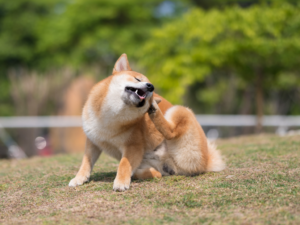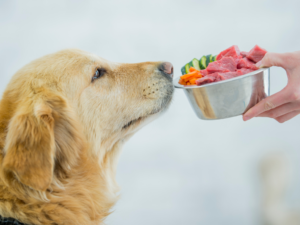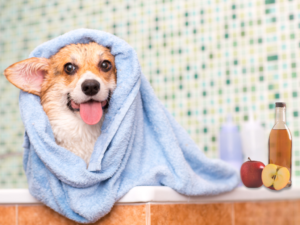What is yeast?
Yeast is a part of a dogs normal healthy gut flora, however when the immune system is compromised this tends to disrupt the normal gut micro biome and develop an overgrowth of yeast causing a yeast or fungal infection.
Typical signs of a yeast infection include excessive scratching causing the dog to scratch the skin so much that it can cause the skin to thicken, the skin pigmentation to darken and sometime cause hair loss. You may also be able to smell a ‘yeasty’ smell, and flaky skin.

Why do dogs get yeast infections?
When a dogs immune system is compromised. Usually this is caused by food intolerance, gut disrupting medication (such as antibiotics) or immune suppressant medication. It can also occur in increased humidity and wet seasons and the consumption of a processed carbohydrate dominated diet. Another common cause of yeast infection is caused by stress, when a dog is stressed it can create a hormonal imbalance which disrupts the gut flora.
How do you treat a yeast infection?
Proper treatment usually requires internal and topical treatment to fully eradicate the infection. It will take time and patience. Target the treatment at the source, which is the gut add a good quality pre and pro biotic to the dogs to their food.
Internal
Eliminate processed foods filled with carbohydrates and preservatives. Remove carbs (rice, pasta, potato and bread) from the diet. Instead switch to a natural raw and biologically appropriate diet filled with nutrition which will naturally balance the gut flora. You can also add virgin coconut oil to your dogs’ meal as it is anti-fungal (approximately ½ teaspoon per 5kg body weight). We also like to recommend the Green Lipped Mussels (available in store) as a daily treat, as these reduce inflammation and help fight bacterial and fungal infections.

External
We recommend an Apple Cider Vinegar bath. Dilute to one part ACV one part water. Wet the dog with warm water and gently scrub the ACV solution with a clean flat sponge concentrating on areas such as the armpits, groin, neck, jowls and stomach. Then rinse the dog thoroughly. Doing this once a week will help balance the skins PH levels and will help take the yeasty smell away.

For ear yeast infections the Natural Animal Solution (NAS Ear Clear) works a treat, and is available in store.
Prevention
Feeding a nutritionally balanced diet formulated from fresh, whole foods will keep your dog healthy on the inside and outside. Reduce exposure to chemicals and medications as much as possible, and provide your dog with a pro biotic (available in store) regularly.
Itchy, scratchy dogs are common, and we can often avoid this by providing the dog with the above strategies.
If your dogs yeast infection persists and is becoming painful for you and your dog, we recommend working with a holistic/integrative vet or animal naturopath to identify, treat and manage the problem.
11 Princess Street, Bundaberg East
Open Tuesday to Saturday
Find us on Google, Facebook, and Instagram
